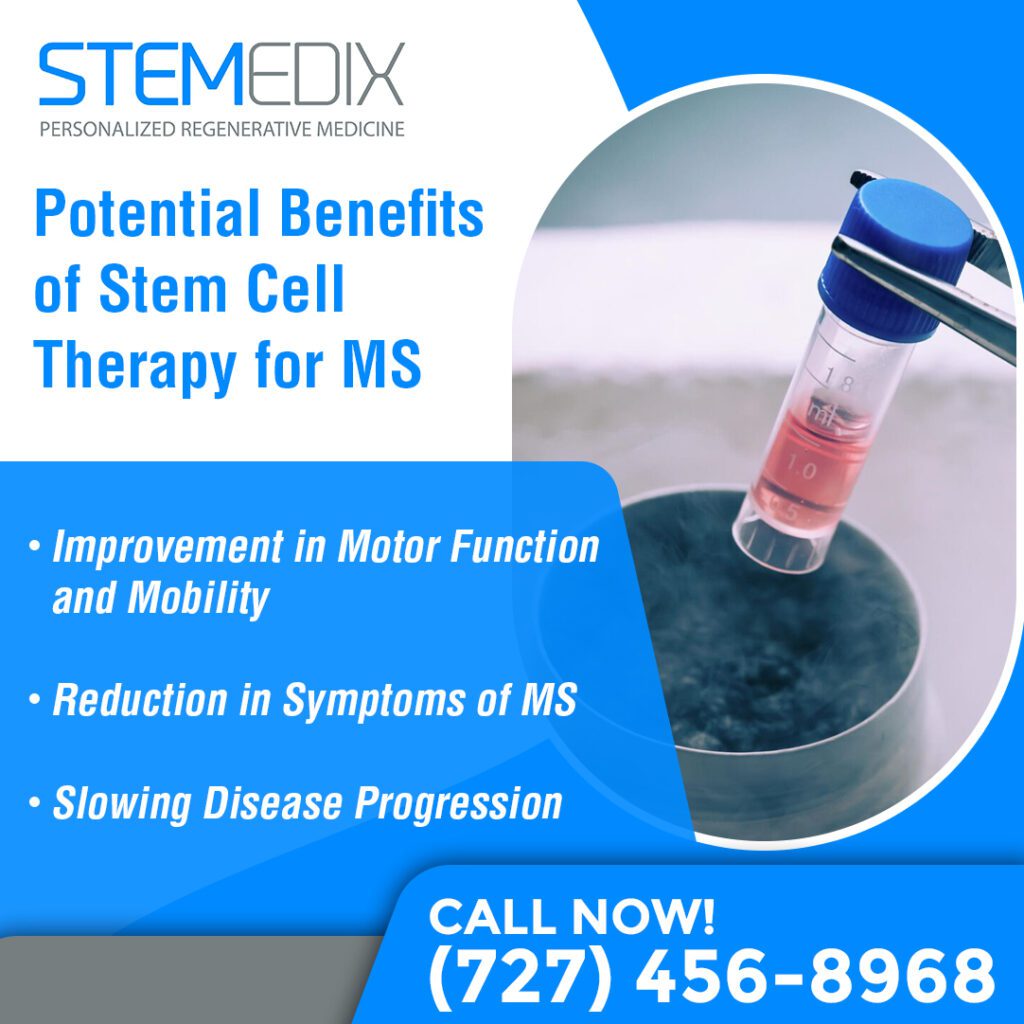Regenerative Medicine For Multiple Sclerosis - Questions
Table of ContentsFascination About Regenerative Medicine For Multiple SclerosisThe Greatest Guide To Regenerative Medicine For Multiple SclerosisGetting The Regenerative Medicine For Multiple Sclerosis To WorkUnknown Facts About Regenerative Medicine For Multiple SclerosisThe smart Trick of Regenerative Medicine For Multiple Sclerosis That Nobody is DiscussingHow Regenerative Medicine For Multiple Sclerosis can Save You Time, Stress, and Money.8 Easy Facts About Regenerative Medicine For Multiple Sclerosis Explained
The mesenchymal stem cells transplanted during stem cell treatment can divide and develop to develop new cells that can take the place of the damaged cells of the nervous tissue. This might restore neurological functions in people with this problem. These advantages of stem cell treatment are more supported by the ability of MSCs to advertise recovery.Individuals with multiple sclerosis are normally treated with mesenchymal stem cells. These are multipotent stem cells that have the ability to set apart and grow to create a wide variety of cell key ins the body. As soon as hair transplanted, these stem cells can establish to develop healthy afferent neuron thus supporting the regeneration of the damaged tissues of the nerve system.
Once hair transplanted, the stem cells move to areas of swelling or damages within the central nerves (CNS). They are normally attracted to the websites of injury where the immune system is attacking the myelin sheath, the safety covering of nerve fibers. The stem cells work by advertising the repair service and regeneration of harmed myelin, possibly restoring feature to affected afferent neuron.
Excitement About Regenerative Medicine For Multiple Sclerosis
Stem Cell Research on MS The National Numerous Sclerosis Society, along with various other companies, is proactively funding and supporting study right into mesenchymal stem cell therapy for several sclerosis to discover their potential and boost therapy methods. The goal is to develop much safer and extra reliable methods to utilize stem cells in dealing with MS.
The Ultimate Guide To Regenerative Medicine For Multiple Sclerosis
Here are below from testimonials of clients Swiss Medica clinic. The person traveled from Romania looking for treatment for MS after listening to favorable feedback regarding stem cell treatment for the disease.
Obtain a cost-free online appointment to discover exactly how stem cells will function for your instance, and what are the duration and price of the treatment. Medical Consultant, Swiss Medica physician Lemus, H. N., Warrington, A. E., & Rodriguez, M. (2018 ). Numerous Sclerosis: Devices of Disease and Approaches for Myelin and Axonal Repair Work.
Some Known Details About Regenerative Medicine For Multiple Sclerosis

Stem cells are cells in the body that can mature right into specialized cells that serve a specific function. They are likewise able to create exact copies of themselves. There are 2 major sorts of stem cells: embryonic stem cells and adult stem cells. are discovered in the developing embryo and can grow right into the majority of kinds of cells in the body.
are found in some adult tissues and organs consisting of the bone marrow, skin, blood, and brain. Grown-up stem cells are not as versatile as embryonic stem cells and are consequently a lot more restricted in terms of the sorts of cells they mature into. The one-of-a-kind residential or commercial properties of stem cells offer assurance for brand-new treatments that can slow/halt MS disease my response activity and fixing cells damages in the main nerve system.
Some Known Details About Regenerative Medicine For Multiple Sclerosis

The procedure includes accumulating stem cells from a person's very own (autologous) bone marrow. The person is after that treated with radiation treatment to deplete the immune system and stem cells are reintroduced right into the body where they develop right into brand-new, healthy and balanced immune cells - Regenerative Medicine for Multiple Sclerosis. Stem cells can be infused into the body in various means

In 2000, the MS Culture of Canada and MS Scientific Study Foundation funded a professional test including HSC transplants, led by Drs. Mark Freedman and Harry Atkins from the Ottawa Healthcare Facility Study Institute/University of Ottawa. The aHSC therapy offered in Canada is a therapy that makes use of high-dose chemotherapy, likewise called conditioning.

The 6-Second Trick For Regenerative Medicine For Multiple Sclerosis
Neural stem cells (NSC) are discovered in the brain and can develop right into different kinds of brain cells including neurons, oligodendrocytes, and astrocytes. NSCs may serve to fix or protect the brain and regulate the body immune system. Early clinical trials in non-human primates showed that therapy with NSCs benefitted the development of MS-like condition in animal models.
The results from these security researches declare for future stem cell and regenerative medication therapies in MS. Future clinical tests (phase 2 and 3) with larger numbers of participants and controls are essential to evaluate the efficiency of this treatment for MS. As shown by the examples above, there is a substantial array of study occurring that will offer extra answers about using stem cells to treat MS.
Stem cell treatment is thought about risk-free, however, like any kind of medical treatment, it carries some threats, such as temporary swelling or pain at the shot site. Severe side effects are rare when performed by certified professionals.
The 45-Second Trick For Regenerative Medicine For Multiple Sclerosis
Several sclerosis (MS) is a chronic illness of the central nerves that influences the brain and spine. It is defined by the degradation of myelin, a substance that covers nerve fibers, resulting in disturbances in interaction between the mind and the rest of the body. Signs and symptoms can vary widely and consist of muscle weakness, vision problems, inequality, and fatigue.
Several sclerosis is identified by the body immune system mistakenly assaulting the safety sheath (myelin) that covers nerve fibers, causing communication concerns between the brain and the rest of the body. The disease can lead to the degeneration or permanent damages of nerves. Signs and symptoms differ commonly amongst people and can consist of fatigue, movement concerns, pain, and cognitive changes.